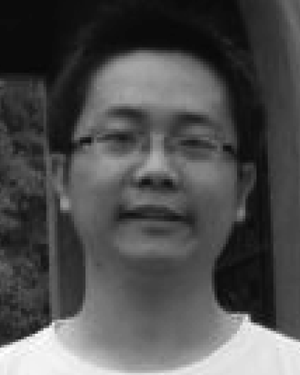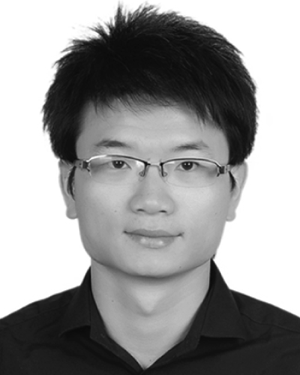Abstract:
Convolutional neural networks (CNNs) have made remarkable progress on scene recognition, partially due to these recent large-scale scene datasets, such as the Places and ...Show MoreMetadata
Abstract:
Convolutional neural networks (CNNs) have made remarkable progress on scene recognition, partially due to these recent large-scale scene datasets, such as the Places and Places2. Scene categories are often defined by multi-level information, including local objects, global layout, and background environment, thus leading to large intra-class variations. In addition, with the increasing number of scene categories, label ambiguity has become another crucial issue in large-scale classification. This paper focuses on large-scale scene recognition and makes two major contributions to tackle these issues. First, we propose a multi-resolution CNN architecture that captures visual content and structure at multiple levels. The multi-resolution CNNs are composed of coarse resolution CNNs and fine resolution CNNs, which are complementary to each other. Second, we design two knowledge guided disambiguation techniques to deal with the problem of label ambiguity: 1) we exploit the knowledge from the confusion matrix computed on validation data to merge ambiguous classes into a super category and 2) we utilize the knowledge of extra networks to produce a soft label for each image. Then, the super categories or soft labels are employed to guide CNN training on the Places2. We conduct extensive experiments on three large-scale image datasets (ImageNet, Places, and Places2), demonstrating the effectiveness of our approach. Furthermore, our method takes part in two major scene recognition challenges, and achieves the second place at the Places2 challenge in ILSVRC 2015, and the first place at the LSUN challenge in CVPR 2016. Finally, we directly test the learned representations on other scene benchmarks, and obtain the new state-of-the-art results on the MIT Indoor67 (86.7%) and SUN397 (72.0%). We release the code and models at https://github.com/wanglimin/MRCNN-Scene-Recognition.
Published in: IEEE Transactions on Image Processing ( Volume: 26, Issue: 4, April 2017)
Funding Agency:

Computer Vision Laboratory, ETH Zürich, Zürich, Switzerland
Limin Wang received the B.Sc. degree from Nanjing University, Nanjing, China, in 2011, and the Ph.D. degree from The Chinese University of Hong Kong, Hong Kong, in 2015. He is currently a Post-Doctoral Researcher with the Computer Vision Laboratory, ETH Zürich. His current research interests include computer vision and deep learning. He was the first runner-up at the ImageNet Large Scale Visual Recognition Challenge 2015 ...Show More
Limin Wang received the B.Sc. degree from Nanjing University, Nanjing, China, in 2011, and the Ph.D. degree from The Chinese University of Hong Kong, Hong Kong, in 2015. He is currently a Post-Doctoral Researcher with the Computer Vision Laboratory, ETH Zürich. His current research interests include computer vision and deep learning. He was the first runner-up at the ImageNet Large Scale Visual Recognition Challenge 2015 ...View more

Chinese Academy of Sciences, Shenzhen Institutes of Advanced Technology, Shenzhen, China
Shenzhen College of Advanced Technology, University of Chinese Academy of Sciences, Beijing, China
Sheng Guo received the M.S. degree in applied mathematics from the Changsha University of Science and Technology, Changsha, China, in 2013. He is currently pursuing the Ph.D. degree with the Shenzhen Institute of Advanced Technology, Chinese Academy of Sciences, Shenzhen. His current research interests are object classification, scene recognition, and scene parsing. He was the first runner-up at the ImageNet Large Scale V...Show More
Sheng Guo received the M.S. degree in applied mathematics from the Changsha University of Science and Technology, Changsha, China, in 2013. He is currently pursuing the Ph.D. degree with the Shenzhen Institute of Advanced Technology, Chinese Academy of Sciences, Shenzhen. His current research interests are object classification, scene recognition, and scene parsing. He was the first runner-up at the ImageNet Large Scale V...View more

Chinese Academy of Sciences, Shenzhen Institutes of Advanced Technology, Shenzhen, China
Visual Geometry Group, University of Oxford, Oxford, U.K.
Weilin Huang (M’13) received the B.Sc. degree in computer science from the University of Shandong, China, the M.Sc. degree in internet computing from the University of Surrey, U.K., and the Ph.D. degree in electronics engineering from The University of Manchester, U.K., in 2012. He is currently a Research Assistant Professor with the Chinese Academy of Science, and a Joint Member of the Multimedia Laboratory, The Chinese ...Show More
Weilin Huang (M’13) received the B.Sc. degree in computer science from the University of Shandong, China, the M.Sc. degree in internet computing from the University of Surrey, U.K., and the Ph.D. degree in electronics engineering from The University of Manchester, U.K., in 2012. He is currently a Research Assistant Professor with the Chinese Academy of Science, and a Joint Member of the Multimedia Laboratory, The Chinese ...View more

Department of Information Engineering, The Chinese University of Hong Kong, Hong Kong
Yuanjun Xiong received the B.S. degree from Tsinghua University, Beijing, China, in 2012, and the Ph.D. degree in information engineering from The Chinese University of Hong Kong, Hong Kong, in 2016. He is currently a Post-doctoral Fellow with the Multimedia Laboratory, The Chinese University of Hong Kong. His research interests include computer vision, machine learning, image understanding, and video content analysis.
Yuanjun Xiong received the B.S. degree from Tsinghua University, Beijing, China, in 2012, and the Ph.D. degree in information engineering from The Chinese University of Hong Kong, Hong Kong, in 2016. He is currently a Post-doctoral Fellow with the Multimedia Laboratory, The Chinese University of Hong Kong. His research interests include computer vision, machine learning, image understanding, and video content analysis.View more

The Chinese University of Hong Kong, Hong Kong
Guangdong Key Laboratory of Computer Vision and Virtual Reality, Shenzhen Institutes of Advanced Technology, Chinese Academy of Sciences, Shenzhen, China
Yu Qiao (SM’13) received the Ph.D. degree from the University of Electro-Communications, Japan, in 2006. He was a JSPS Fellow and Project Assistant Professor with The University of Tokyo from 2007 to 2010. He is currently a Professor with the Shenzhen Institutes of Advanced Technology, Chinese Academy of Sciences. He has authored over 110 papers. His research interests include computer vision, deep learning, multimedia, a...Show More
Yu Qiao (SM’13) received the Ph.D. degree from the University of Electro-Communications, Japan, in 2006. He was a JSPS Fellow and Project Assistant Professor with The University of Tokyo from 2007 to 2010. He is currently a Professor with the Shenzhen Institutes of Advanced Technology, Chinese Academy of Sciences. He has authored over 110 papers. His research interests include computer vision, deep learning, multimedia, a...View more

Computer Vision Laboratory, ETH Zürich, Zürich, Switzerland
Limin Wang received the B.Sc. degree from Nanjing University, Nanjing, China, in 2011, and the Ph.D. degree from The Chinese University of Hong Kong, Hong Kong, in 2015. He is currently a Post-Doctoral Researcher with the Computer Vision Laboratory, ETH Zürich. His current research interests include computer vision and deep learning. He was the first runner-up at the ImageNet Large Scale Visual Recognition Challenge 2015 in scene recognition and the winner at the ActivityNet Large Scale Activity Recognition Challenge 2016 in video classification.
Limin Wang received the B.Sc. degree from Nanjing University, Nanjing, China, in 2011, and the Ph.D. degree from The Chinese University of Hong Kong, Hong Kong, in 2015. He is currently a Post-Doctoral Researcher with the Computer Vision Laboratory, ETH Zürich. His current research interests include computer vision and deep learning. He was the first runner-up at the ImageNet Large Scale Visual Recognition Challenge 2015 in scene recognition and the winner at the ActivityNet Large Scale Activity Recognition Challenge 2016 in video classification.View more

Chinese Academy of Sciences, Shenzhen Institutes of Advanced Technology, Shenzhen, China
Shenzhen College of Advanced Technology, University of Chinese Academy of Sciences, Beijing, China
Sheng Guo received the M.S. degree in applied mathematics from the Changsha University of Science and Technology, Changsha, China, in 2013. He is currently pursuing the Ph.D. degree with the Shenzhen Institute of Advanced Technology, Chinese Academy of Sciences, Shenzhen. His current research interests are object classification, scene recognition, and scene parsing. He was the first runner-up at the ImageNet Large Scale Visual Recognition Challenge 2015 in scene recognition.
Sheng Guo received the M.S. degree in applied mathematics from the Changsha University of Science and Technology, Changsha, China, in 2013. He is currently pursuing the Ph.D. degree with the Shenzhen Institute of Advanced Technology, Chinese Academy of Sciences, Shenzhen. His current research interests are object classification, scene recognition, and scene parsing. He was the first runner-up at the ImageNet Large Scale Visual Recognition Challenge 2015 in scene recognition.View more

Chinese Academy of Sciences, Shenzhen Institutes of Advanced Technology, Shenzhen, China
Visual Geometry Group, University of Oxford, Oxford, U.K.
Weilin Huang (M’13) received the B.Sc. degree in computer science from the University of Shandong, China, the M.Sc. degree in internet computing from the University of Surrey, U.K., and the Ph.D. degree in electronics engineering from The University of Manchester, U.K., in 2012. He is currently a Research Assistant Professor with the Chinese Academy of Science, and a Joint Member of the Multimedia Laboratory, The Chinese University of Hong Kong. His research interests include computer vision, machine learning, and pattern recognition. He has served as a PC Member or Reviewer for several conferences and journals, including the Computer Vision and Pattern Recognition, the European Conference on Computer Vision, AAAI, the IEEE TPAMI, and the IEEE TIP. He was the first runner-up at the ImageNet Large Scale Visual Recognition Challenge 2015 in scene recognition.
Weilin Huang (M’13) received the B.Sc. degree in computer science from the University of Shandong, China, the M.Sc. degree in internet computing from the University of Surrey, U.K., and the Ph.D. degree in electronics engineering from The University of Manchester, U.K., in 2012. He is currently a Research Assistant Professor with the Chinese Academy of Science, and a Joint Member of the Multimedia Laboratory, The Chinese University of Hong Kong. His research interests include computer vision, machine learning, and pattern recognition. He has served as a PC Member or Reviewer for several conferences and journals, including the Computer Vision and Pattern Recognition, the European Conference on Computer Vision, AAAI, the IEEE TPAMI, and the IEEE TIP. He was the first runner-up at the ImageNet Large Scale Visual Recognition Challenge 2015 in scene recognition.View more

Department of Information Engineering, The Chinese University of Hong Kong, Hong Kong
Yuanjun Xiong received the B.S. degree from Tsinghua University, Beijing, China, in 2012, and the Ph.D. degree in information engineering from The Chinese University of Hong Kong, Hong Kong, in 2016. He is currently a Post-doctoral Fellow with the Multimedia Laboratory, The Chinese University of Hong Kong. His research interests include computer vision, machine learning, image understanding, and video content analysis.
Yuanjun Xiong received the B.S. degree from Tsinghua University, Beijing, China, in 2012, and the Ph.D. degree in information engineering from The Chinese University of Hong Kong, Hong Kong, in 2016. He is currently a Post-doctoral Fellow with the Multimedia Laboratory, The Chinese University of Hong Kong. His research interests include computer vision, machine learning, image understanding, and video content analysis.View more

The Chinese University of Hong Kong, Hong Kong
Guangdong Key Laboratory of Computer Vision and Virtual Reality, Shenzhen Institutes of Advanced Technology, Chinese Academy of Sciences, Shenzhen, China
Yu Qiao (SM’13) received the Ph.D. degree from the University of Electro-Communications, Japan, in 2006. He was a JSPS Fellow and Project Assistant Professor with The University of Tokyo from 2007 to 2010. He is currently a Professor with the Shenzhen Institutes of Advanced Technology, Chinese Academy of Sciences. He has authored over 110 papers. His research interests include computer vision, deep learning, multimedia, and robotics. He received the Lu Jiaxi Young Researcher Award from the Chinese Academy of Sciences in 2012.
Yu Qiao (SM’13) received the Ph.D. degree from the University of Electro-Communications, Japan, in 2006. He was a JSPS Fellow and Project Assistant Professor with The University of Tokyo from 2007 to 2010. He is currently a Professor with the Shenzhen Institutes of Advanced Technology, Chinese Academy of Sciences. He has authored over 110 papers. His research interests include computer vision, deep learning, multimedia, and robotics. He received the Lu Jiaxi Young Researcher Award from the Chinese Academy of Sciences in 2012.View more


